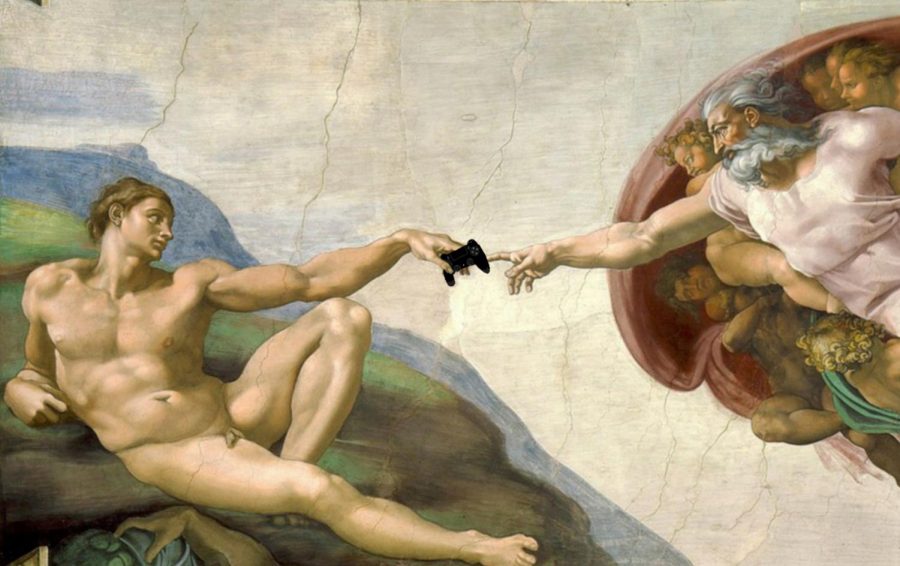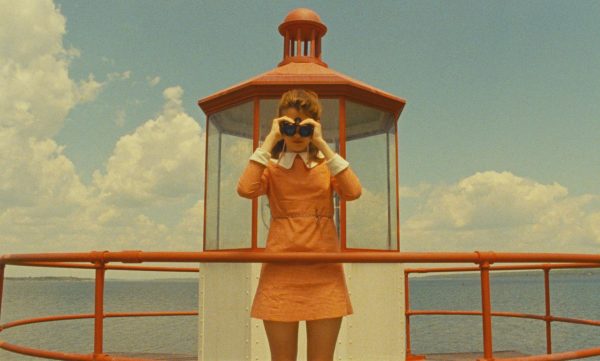Video Games: High Art or Waste of Time?
Video games should be a more respected art form
Video games are a significantly younger medium of art when compared to paintings, music and other mediums we think of when we hear the word “art,” although many traditionalists have argued that it should be thought of as more of a passtime than art. This notion, however, should be shot down immediately, for video games are perhaps the highest and most limitless form of art ever created.
Gaming has become the United States’ largest entertainment industry, which was expected to reach almost one hundred and sixty billion dollars in revenue by the end of 2020 according to Reuters. Every year it seems it becomes harder and harder to compare other industries like film and music to video games. But while they may be making more money, are they greater in cultural significance as well? Can the most iconic games be compared to box office smash hits and hot 100 singles? We are far from thinking of “art” and video games the same way.
Games Are the Ultimate Form of Art
Video games are the ultimate sum of all forms of art. They are a combination of literary storytelling, musical performance, cinematic visuals and a lot of programming and hard work.
A point could be made arguing that video games cannot be art because they are just a mesh of other art forms; while anything could probably fall under a word with such a loose meaning like “art,” high art is very specific and must be unique in its own right.
The quality that video games have that absolutely no other medium can achieve to the same degree is immersion. It is unprecedented for someone to go to a museum and enter the canvases on the wall. Video games allow the audience to actually interact with the world created. Hyper popular games like “Minecraft” are so interactive that they have become their own sub-medium of art. The paths opened up by the idea of interacting with the art are limitless.
The Image of the Game Industry
The easiest thing to blame the lack of acceptance on is the industry’s age. Video games are not a medium that every living person has grown up with. Arcade game machines did not exist until the early seventies, and the console market was not popularized until a few years later. The accessibility of games at the time was incomparable to something such as music on vinyl.
The image of the game industry and its culture even now is looked down upon by many. This is because many view the gaming community as a mesh of other communities.
For example, every major form of entertainment has a widely celebrated award show. Music has the Grammys, movies have the Oscars, and games have Geoff Keighley’s Game Awards. The problem with the Game Awards is that they lack an identity of their own. For many people, the most exciting thing about award shows are the guest celebrity appearances. There are major figures in the gaming world, but none quite as prolific as most popular actors or singers. Celebrity appearances at major gaming events are usually celebrities from other industries, ones the average gamer would assume have never played a game in their lives. Notable examples include Stephen A. Smith and Christopher Nolan at the 2020 Game Awards, both of which have no history of working in the game industry. How are gamers supposed to feel when they watch these shows and a big award is presented by Mr. Hollywood Movie Man? If the Game Awards want to be taken as seriously as other award shows, they should implement veterans from their own industry.
Games That Prove Themselves as Art
CD Projekt Red’s “The Witcher 3: Wild Hunt” is a masterful adaptation of Andrzej Sapkowski’s famed fantasy novels. The game is more than an adaptation, however, but an additional canon with storytelling more compelling than the majority of fantasy novels. As the story progresses, gamers are presented with a multitude of dialogue options that branch off into even more opportunities. Every single possible story path is well written and makes sense. It is hard to imagine how long it took to write hundreds of incredible outcomes, and with the precision of a full length novel at that. This fiction combined with every other aspect of the game, which are all at the top of their class as well, creates a convincing war torn fantasy world.
“Inside” is a six-year-long project from small Danish developer Playdead. It is a platforming game with a moody, atmospheric presentation that is close to perfection. The muddled grey environments full of silhouettes leave the setting up to the players’ interpretation. It tells a story silently yet straightforwardly. The visual storytelling is on par with cinema such as “Wall-E,” a movie that didn’t have a single line of dialogue for the first 39 minutes. “Inside” surpasses Wall-E, however, by having zero lines of dialogue and even more tension in the narrative through the situation only.
Nintendo’s famed masterpiece “The Legend of Zelda: Breath of The Wild” is another open world role-playing game that non-gamers may know of, considering the 20 million copies it has sold. It is known for its beautiful world and fun yet simple gameplay. An aspect of it that goes criminally unnoticed is the sound design. Sound design draws the players’ attention in order to make them feel immersed, which is important because immersion is the aspect of games that separates them from other mediums. If a gamer wants to feel like they are in another world, it is important to surround them with the melodies of that world.
Zelda’s sound, which is not even close to being the game’s focal point, is an absolute masterclass in not just games, but art. Players journey as a warrior-knight who has to travel diverse terrain from mountains to rainforests. Every footstep, jump and stride a gamer takes makes different sounds depending on the material they are walking on and the clothing they are wearing. This type of sound design is already a standard for high budget games, however. There have been enough games with similar play styles for traversal noises to sound great across the board. What makes Zelda special is the extra layers of detail stacked on top of that standard that the developers implemented. I was first impressed at the fact that when you sneak around instead of running, the footstep volume is not just lowered, it is rerecorded to sound like someone attempting to be quieter. The detail doesn’t stop with movement; when you enter combat every strike you make with your sword is a different sound that complements the dry piano music. This sound design feels like a low-key and peaceful version of a classic carton orchestra, following the characters’ movements. There are simply too many details to delve into.
The Future
Video games have proven themselves to be the art of the future. Movie theaters are closed and physical music sales decrease every year, all while the video game industry grows. A new generation of consoles just released and developers have new limits to discover in their technology, and even deeper immersion to create. Video games are a high art, and the ultimate form of it at that.














Anonymous • May 20, 2022 at 1:28 PM
love games.
Taher123 • Nov 20, 2021 at 10:42 AM
Thank you very much for a very important topic. Please note that everyone presents the site owner with all thanks for the important topic. Keep it up, creator
GAMES4FANS